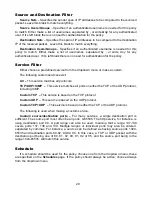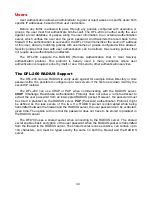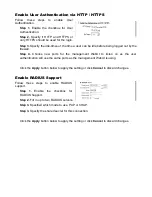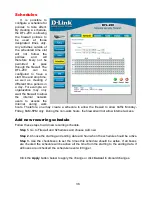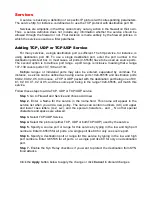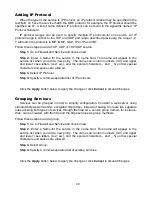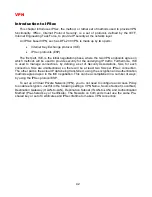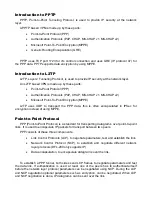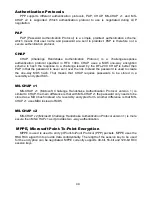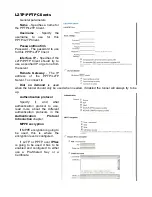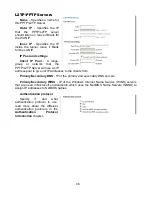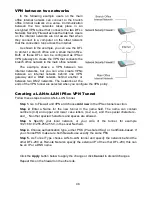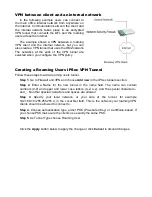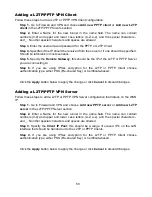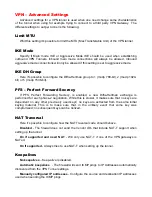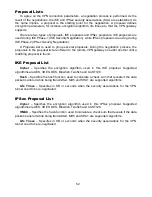
42
VPN
Introduction to IPSec
This chapter introduces IPSec, the method, or rather set of methods used to provide VPN
functionality. IPSec, Internet Protocol Security, is a set of protocols defined by the IETF,
Internet Engineering Task Force, to provide IP security at the network layer.
An IPSec based VPN, such as DFL-200 VPN, is made up by two parts:
•
Internet Key Exchange protocol (IKE)
•
IPSec
protocols
(ESP)
The first part, IKE, is the initial negotiation phase, where the two VPN endpoints agree on
which methods will be used to provide security for the underlying IP traffic. Furthermore, IKE
is used to manage connections, by defining a set of Security Associations, SAs, for each
connection. SAs are unidirectional, so there will be at least two SAs per IPSec connection.
The other part is the actual IP data being transferred, using the encryption and authentication
methods agreed upon in the IKE negotiation. This can be accomplished in a number of ways;
by using the IPSec protocol ESP.
To set up a Virtual Private Network (VPN), you do not need to configure an Access Policy
to enable encryption. Just fill in the following settings: VPN Name, Source Subnet (Local Net),
Destination Gateway (If LAN-to-LAN), Destination Subnet (If LAN-to-LAN) and Authentication
Method (Pre-shared key or Certificate). The firewalls on both ends must use the same Pre-
shared key or set of Certificates and IPSec lifetime to make a VPN connection.
Summary of Contents for DFL-200 - Security Appliance
Page 102: ...102 5 Select Connect to the network at my workplace and click Next ...
Page 103: ...6 Select Virtual Private Network connection and click Next ...
Page 104: ...104 7 Name the connection MainOffice and click Next ...
Page 105: ...8 Select Do not dial the initial connection and click Next ...
Page 106: ...106 9 Type the IP address to the server 194 0 2 20 and click Next 10 Click Finish ...
Page 129: ...VCCI Warning ...
Page 132: ...132 ...
Page 133: ......

